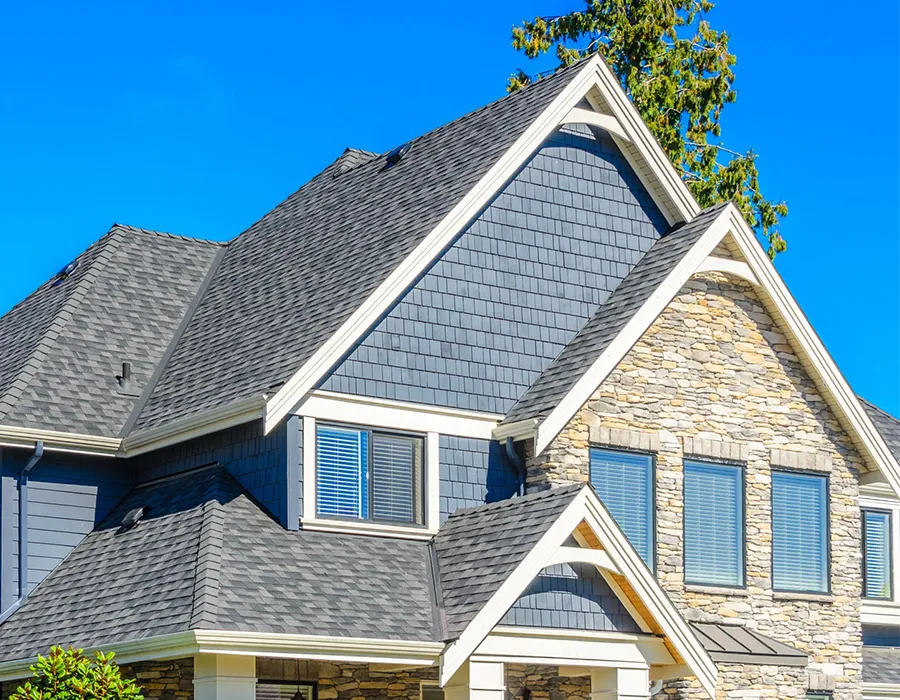When it comes to protecting your home, your roof is your first line of defense. A properly installed roof not only shields you from the elements but also enhances your home’s aesthetic appeal and value. In this guide, we’ll walk you through everything you need to know about roofing installation—from choosing the right materials to ensuring a smooth installation process.
Understanding Roofing Basics
Types of Roofing Materials
Choosing the right roofing material is crucial. Here are some popular options:
- Asphalt Shingles: These are the most common roofing materials due to their affordability, ease of installation, and variety of styles. They can last 15 to 30 years, depending on the quality.
- Metal Roofing: Known for its durability and energy efficiency, metal roofing can last 40 to 70 years. It’s lightweight and available in various colors and styles, making it a popular choice for many homeowners.
- Tile Roofing: With its unique look and impressive longevity, tile roofing can last over 50 years. It’s an excellent option for areas with high temperatures but can be heavy and requires proper structural support.
- Slate Roofing: This premium option is incredibly durable, often lasting over a century. While it offers a stunning look, slate is heavy and typically more expensive than other materials.
- Choosing the Right Material: When selecting a roofing material, consider your local climate, budget, and the architectural style of your home. Each material has its pros and cons, so take the time to research which one fits your needs best.
Preparing for Installation
- Assessing Your Current Roof: Before installation, it’s essential to inspect your existing roof. Look for signs of leaks, damage, or other issues that may need addressing.
- Gathering Necessary Permits: Check your local building codes to ensure you obtain the necessary permits before starting your project. This step can save you from potential legal troubles down the road.
- Choosing a Roofing Contractor: Not all roofing contractors are created equal. Look for experienced professionals with positive reviews and solid warranties. Don’t hesitate to ask for references to ensure you’re making the right choice.
Roofing Installation Process in 6 Steps
1. Removal of Old Roofing
The first step in the installation process is to remove the old roofing materials. This is crucial to prevent moisture buildup and ensure the new roof is properly installed.
2. Inspecting the Roof Deck
After the old roofing is removed, inspect the roof deck for any rot or damage. Any issues should be repaired before laying new material.
3. Installing Underlayment
The underlayment acts as an additional barrier against moisture. It’s typically installed before the roofing material to protect your home.
4. Laying Down the Roofing Material
Now it’s time to install the roofing material. Here’s how to do it for various options:
- Asphalt Shingles: Start from the bottom and work your way up, overlapping each row to ensure water runoff.
- Metal Panels: Install panels from the bottom up, ensuring proper overlap to direct water away from seams.
- Tiles and Slates: These materials often require a battens system to secure them properly.
5. Flashing Installation
Flashing is essential for preventing leaks around areas like chimneys and vents. Make sure it’s installed correctly to protect your roof.
6. Final Touches and Clean-Up
Once the installation is complete, take the time to clean up any debris and ensure all materials are securely fastened.
Roof Installation Timeline
The timeline for roofing installation can vary depending on several factors, including the material you choose, the size of your roof, and weather conditions. On average, a roof replacement or installation typically takes between 1 to 3 days. Here’s a general breakdown:
Preparation & Tear-Off
This phase includes removing the old roofing material, which can take anywhere from a few hours to a full day, depending on the roof size and material type.
Roof Deck Inspection
After the old roof is removed, the underlying deck is checked for any damage or rot. This can add a day or more if repairs are needed.
Underlayment & Material Installation
Laying down underlayment (a protective layer) usually takes a few hours. Installing the roofing material itself varies by type:
- Asphalt shingles: 1–2 days
- Metal roofing: 1–2 days
- Tile or slate: 2–4 days (due to the more complex installation process)
Final Touches
This includes flashing installation, sealing, and clean-up. Typically, this takes a few hours.
Factors Affecting the Timeline
- Weather conditions: Rain, snow, or extreme heat can delay the installation process.
- Roof size: Larger roofs or complex designs take longer to complete.
- Material choice: Some materials, such as tile or slate, require more time for precise installation compared to quicker materials like asphalt shingles.
By planning carefully and ensuring ideal conditions, you can expect your new roof to be installed in as little as one to two days, though more complex projects may take longer.
Maintenance Tips for Your New Roof
A new roof is a significant investment, so regular maintenance is key:
- Regular Inspections: Schedule roof inspections at least twice a year and after severe weather. Early detection of issues can save you money on repairs.
- Cleaning Gutters: Clogged gutters can lead to water damage and leaks. Keep them clean to ensure proper water drainage.
- Debris Removal: Regularly remove leaves, branches, and other debris from your roof to prevent damage and maintain its appearance.
Conclusion
A well-installed roof is crucial for your home’s protection and value. By understanding the installation process and committing to regular maintenance, you can extend the life of your roof significantly. If you’re considering a new roof or need help with installation, don’t hesitate to reach out to Apex Roofing for expert advice and services.
Ready to get started on your roofing project? Contact us today for a consultation.
